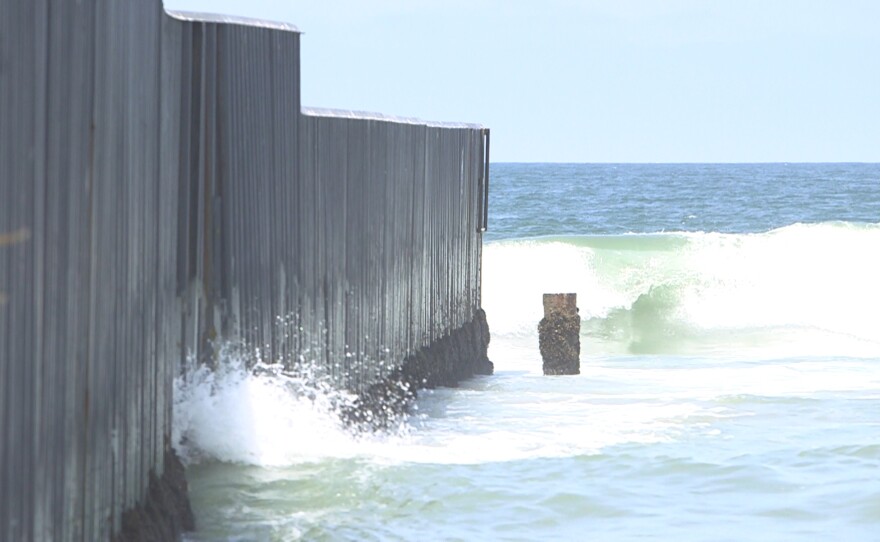At the edge of San Diego County where the U.S. meets Mexico, the valleys and mountains are home to endangered species like the Quino checkerspot butterfly and fragile ecosystems like vernal pools.
President Trump plans to launch his border wall project in this landscape, with prototypes scheduled to rise in the neighborhood of Otay Mesa this summer. Officials also plan to rebuild 14 miles of existing double-layer border fence stretching inland from Imperial Beach through a sensitive salt marsh.
"There are a lot of environmental resources at stake," said Brian Segee, senior attorney at the Center for Biological Diversity, a nonprofit that sued the federal government in District Court on July 7.
“Obviously a lot of damage has already been done there, but the reconstruction of that double-layer border wall would still be a massive construction undertaking — it would have a large footprint.”
The lawsuit claims that the Department of Homeland Security and Customs and Border Protection have failed to prepare and publish legally required environmental impact analyses for the border wall project. It cites the National Environmental Policy Act, which requires that federal agencies analyze the environmental impact of actions that could hurt wildlife and issue impact statements, among other things.
The center also alleges violations of the Freedom of Information Act. Its attorneys submitted FOIA requests for records pertaining to the government's environmental analysis and did not receive a response in the legally required timeframe. All they got was an acknowledgment of the request's receipt.
“We’re now at the threshold of these major construction processes being undertaken at the border and there’s just no information, no environmental analysis that’s been done," Segee said.
Both the Department of Homeland Security and Customs and Border Protection declined to comment on the lawsuit, citing a policy of not discussing pending litigation.
Disregard for environmental laws along the border, such as alleged here, is nothing new.
Construction on most of the existing border fence circumvented environmental regulations. The REAL ID Act of 2005 gave Homeland Security the power to waive any laws deemed necessary to ensure quick construction of border barriers, in the name of national security. Homeland Security Secretary John Kelly could invoke those waivers, just as former secretary Michael Chertoff did under George W. Bush.
“We would challenge those waivers, but it would not at all be surprising for this administration to use that authority," Segee said.

He added that very little is known about the damage that the existing border fence did to the environment because of the waivers, which canceled mitigation and monitoring efforts that are normally conducted in relation to such large construction projects.
"It's been lawless, the way the border wall has been built," he said.
He said there is a widespread misconception of the U.S.-Mexico border as a desolate wasteland due to Hollywood films and other stereotypes, when in fact it is a biologically diverse region.
"The 2,000-mile U.S.-Mexico border from San Diego to Brownsville is one of the most rich areas of wildlife that we have in the country, and it's reflected by the fact that we have so many protected areas," he said, citing nature reserves like Big Bend National Park in southwest Texas and Organ Pipe Cactus National Monument in Arizona.
The government has until September 5 to respond to the claims in the lawsuit.






